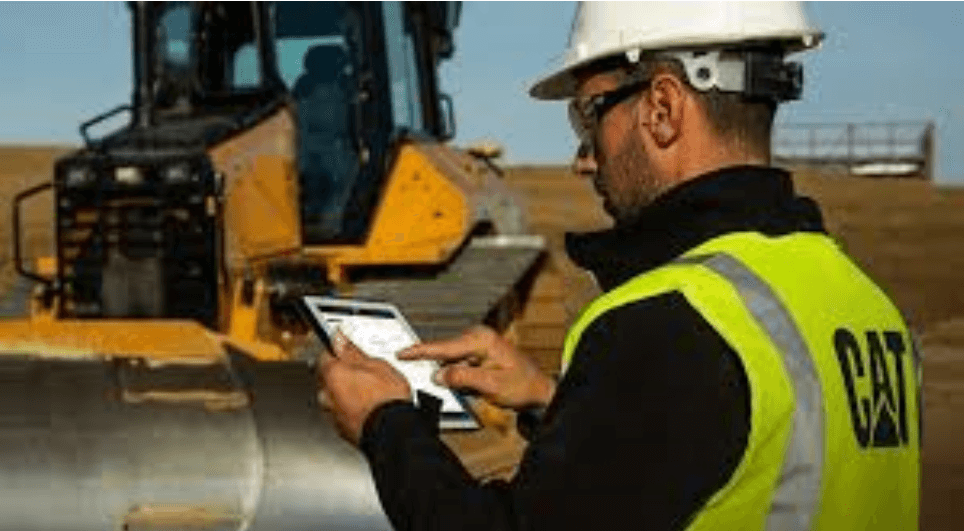Construction fleets used to run on trust, whiteboards, and two-way radios. Today, they’re run by satellites. GPS technology has quietly become the backbone of modern fleet operations—and not just for knowing where your machines are. With the rise of construction equipment tracking software, contractors are unlocking new levels of visibility, efficiency, and cost control by leveraging GPS in ways the industry couldn’t imagine a decade ago. If you’re still treating GPS like a simple location pin, you’re missing the bigger picture.
Outdated Tracking Methods Are Holding Fleets Back
Let’s be real—many companies still “track” equipment with manual logs, phone calls, and gut instinct. And when something goes missing? The entire job site slows down while crews search for that one skid steer that was “supposed to be here.” That chaos doesn’t just waste time—it costs real money.
According to a report by the Construction Industry Institute, poor equipment tracking and scheduling can reduce field productivity by up to 35%. That’s not a scheduling issue—it’s a visibility crisis.
This is exactly why contractors are turning to construction equipment tracking software. GPS-driven solutions aren’t just about dots on a map—they’re about control, accountability, and optimization.
The GPS Revolution in Construction Fleets
Real-Time Asset Location: No More Guessing Games
When every machine’s exact location is displayed on a live dashboard, you stop making phone calls and start making moves. GPS allows you to pinpoint any asset—down to the street corner—and see whether it’s active, idle, or in transport.
This kind of clarity reduces asset hoarding, prevents theft, and eliminates job site confusion. In fact, a study by the National Equipment Register found that GPS-enabled tracking systems recover up to 75% of stolen construction equipment, compared to under 20% without tracking.
Utilization Insights and Idle Time Reports
Location is just the beginning. Modern systems track how long each asset is being used, how often it’s sitting idle, and whether it’s being over- or under-utilized. This helps fleet managers redistribute equipment efficiently, ensuring no machine sits collecting dust while another gets overworked.
According to Trimble’s 2022 Connected Construction report, contractors using tracking software reduced equipment idle time by up to 30%, saving on fuel and wear-and-tear.
Route Optimization and Fuel Savings
For contractors running large fleets across multiple sites, GPS can drastically improve routing. With historical and real-time traffic data, teams can plan more efficient hauls, reduce fuel waste, and minimize driver downtime.
One Georgia-based firm using GPS-enabled dispatch saw a 22% drop in fuel costs in just six months, thanks to smarter routing and better driver behavior tracking.
How Construction Equipment Tracking Software Makes It All Possible
Centralized Data at Your Fingertips
Tracking platforms gather GPS data and combine it with maintenance records, engine diagnostics, and usage reports. This provides managers with a single, streamlined dashboard showing the who, what, where, and how of their entire fleet.
Clue, for example, offers a tracking platform that integrates GPS with maintenance alerts and asset performance metrics—giving you a bird’s-eye view and a ground-level breakdown all in one place.
With this level of insight, decisions become faster, easier, and more accurate—without the endless paper trails and calls across job sites.
Theft Prevention and Geofencing
Theft is still a massive problem in the construction world, costing the U.S. industry $1 billion annually, according to the National Insurance Crime Bureau. With geofencing technology, managers can set virtual boundaries and receive instant alerts if a machine leaves the designated area.
This not only improves recovery rates but also acts as a strong deterrent. Some contractors have even seen insurance premiums drop after implementing GPS-based tracking due to improved theft prevention protocols.
Compliance and Accountability
Whether it’s EPA compliance, project documentation, or internal accountability, GPS data provides a clear audit trail. You know when the machine arrived, how long it ran, and when it left the job site—perfect for billing verification, overtime disputes, or contract reviews.
This kind of detailed recordkeeping has become crucial as projects grow more complex and regulations get tighter.
The Bigger Picture: Building Smarter, Not Just Faster
Empowering Data-Driven Decisions
When you know exactly how your fleet is performing, you can plan better, spend less, and scale faster. Equipment tracking software doesn’t just keep tabs—it uncovers inefficiencies you didn’t know existed.
McKinsey & Company reports that companies adopting GPS tracking and real-time fleet visibility improve project delivery times by 20% on average—simply because they operate with fewer disruptions and more predictability.
Sustainability Matters Too
Fewer idle hours and smarter routing don’t just save money—they reduce emissions. Construction fleets contribute a significant portion of jobsite pollution, but GPS-driven optimization is helping to change that.
According to the U.S. Department of Energy, effective fleet tracking systems can reduce fuel use by up to 15%, translating into smaller carbon footprints and cleaner project records—key for public contracts and green certifications.
Conclusion
If you’re still relying on verbal check-ins or handwritten logs to manage a multimillion-dollar fleet, you’re not just old school—you’re at risk. From reduced theft and idle time to sharper project coordination and better compliance, GPS is redefining how construction fleets operate.
And with the power of construction equipment tracking software, this GPS revolution goes far beyond location. It gives contractors full visibility, tighter control, and data that fuels every smart decision. Providers like Clue are leading this transformation, offering integrated platforms that turn raw location data into actionable insights.
The future of construction isn’t about buying more equipment. It’s about using what you already have smarter, faster, and longer.
